I have a WorksheetFunction.SumIfs with 3 Args code being applied in so many cells (10k rows x 20 columns), it ran for 2 hours to get complete, but when I do the same but with formula in excel and drag and drop until last column and line, it goes much faster (less than 10min). I have already done xlCalculationManual. do you have any idea on how to improve processing time in VBA?
Code:
application.calculation= xlCalculationManual
for Col = 3 to 22
for Row = 2 to 10000
FileA.Cells(Row, Col).Value = Application.WorksheetFunction.SumIfs(FileB.Range("A:A"), FileB.Range("D:D"), FileA.Range("A" & Row).Value, FileB.Range("B:B"), FileA.Range("B" & Row).Value, FileB.Range("C:C"), FileA.Cells(1, Col).Value)
Next
Next
SOLUTION: I found a simple solution by myself. In a big range of data, instead of using Application.WorksheetFunction.FUNCTION_NAME inside FOR, use Book.Sheet.Range().Formula = "=Formula(Parameters)" in the first Cell, then use .Copy, then .PasteSpecial Paste:=xlPasteFormulas, examples below:
' Takes 2h
for Col = 3 to 22
for Row = 2 to 10000
FileA.Cells(Row, Col).Value = Application.WorksheetFunction.SumIfs(FileB.Range("A:A"), FileB.Range("D:D"), FileA.Range("A" & Row).Value, FileB.Range("B:B"), FileA.Range("B" & Row).Value, FileB.Range("C:C"), FileA.Cells(1, Col).Value)
Next
Next
' Takes 10min
application.calculation= xlCalculationManual
FileA.Cells(2, 3).Formula = "=SUMIFS([FileB.XLSX]Sheet1!$A:$A,[FileB.XLSX]Sheet1!$D:$D,$A2,[FileB.XLSX]Sheet1!$B:$B,$B2,[FileB.XLSX]Sheet1!$C:$C,C$1)"
FileA.Cells(2, 3).Copy
FileA.Range(FileA.Cells(2, 3), FileA.Cells(10000, 22)).PasteSpecial Paste:=xlPasteFormulas
application.calculation= xlCalculationAutomatic


